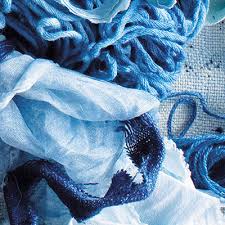Exploring the Market Dynamics and Trends in Synthetic Indigo Production and Valuation
The Rise of Synthetic Indigo A Modern Textile Revolution
In the world of textiles, few colors have held as enduring a legacy as indigo. Traditionally derived from the plant Indigofera, this deep blue dye has graced fabrics for millennia, from ancient Egypt to contemporary denim. However, in recent years, synthetic indigo has emerged as a game-changer in the industry, reflecting not only technological advancements but also shifting economic and environmental considerations.
The Rise of Synthetic Indigo A Modern Textile Revolution
One of the pivotal benefits of synthetic indigo lies in its production efficiency. Traditional natural indigo requires extensive agriculture and can be subject to fluctuations in crop yield due to environmental factors. Conversely, synthetic indigo can be manufactured using chemical processes that allow for better control over quality and supply. This not only ensures a steadier availability of the dye but also functions to stabilize market prices—much to the benefit of clothing manufacturers who thrive on predictability.
synthetic indigo quotes

However, the conversation about synthetic indigo does not end at economic advantages. Environmental considerations are also prominent in discussions surrounding dye production. The cultivation of natural indigo often involves the use of pesticides and extensive water resources, raising concerns about sustainability. In contrast, synthetic alternatives can be produced in a more controlled environment that minimizes waste and reduces harmful agricultural practices. Additionally, some manufacturers are exploring more eco-friendly chemical processes to create synthetic indigo, paving the way for less pollution and a smaller carbon footprint.
Yet, the transition to synthetic indigo is not without its challenges. Some purists argue that natural indigo offers a depth of color and richness that is difficult to replicate. The subtle variations found in naturally dyed fabrics are cherished by many artisans and consumers alike. Furthermore, the traditional dyeing process, which often involves unique techniques passed down through generations, holds cultural significance that synthetic production cannot replicate.
Despite these challenges, the popularity of synthetic indigo continues to soar, especially in fast fashion industries where speed and consistency are paramount. Brands are increasingly embracing synthetic indigo dyes not only for their practicality but also for the narratives of innovation they can cultivate. Marketing synthetic indigo as a high-tech alternative to natural dyes can resonate well with consumers who value scientific advancement, even as they appreciate the heritage of textiles.
In conclusion, the rise of synthetic indigo is emblematic of broader trends within the textile industry, where efficiency, sustainability, and innovation play crucial roles. As the balance between traditional practices and modern needs continues to evolve, the narrative around synthetic indigo could shift once again. The challenge lies in finding ways to honor traditional dyeing techniques while embracing the advancements that synthetic methods bring. As we look to the future, it remains essential for the industry to navigate this path thoughtfully, ensuring that progress does not come at the cost of cultural heritage or environmental health. The vibrant world of indigo, whether synthetic or natural, will undoubtedly continue to inspire as it adapts to the challenges and opportunities of a changing landscape.
-
The Timeless Art of Denim Indigo Dye
NewsJul.01,2025
-
The Rise of Sulfur Dyed Denim
NewsJul.01,2025
-
The Rich Revival of the Best Indigo Dye
NewsJul.01,2025
-
The Enduring Strength of Sulphur Black
NewsJul.01,2025
-
The Ancient Art of Chinese Indigo Dye
NewsJul.01,2025
-
Industry Power of Indigo
NewsJul.01,2025
-
Black Sulfur is Leading the Next Wave
NewsJul.01,2025

Sulphur Black
1.Name: sulphur black; Sulfur Black; Sulphur Black 1;
2.Structure formula:
3.Molecule formula: C6H4N2O5
4.CAS No.: 1326-82-5
5.HS code: 32041911
6.Product specification:Appearance:black phosphorus flakes; black liquid

Bromo Indigo; Vat Bromo-Indigo; C.I.Vat Blue 5
1.Name: Bromo indigo; Vat bromo-indigo; C.I.Vat blue 5;
2.Structure formula:
3.Molecule formula: C16H6Br4N2O2
4.CAS No.: 2475-31-2
5.HS code: 3204151000 6.Major usage and instruction: Be mainly used to dye cotton fabrics.

Indigo Blue Vat Blue
1.Name: indigo blue,vat blue 1,
2.Structure formula:
3.Molecule formula: C16H10N2O2
4.. CAS No.: 482-89-3
5.Molecule weight: 262.62
6.HS code: 3204151000
7.Major usage and instruction: Be mainly used to dye cotton fabrics.

